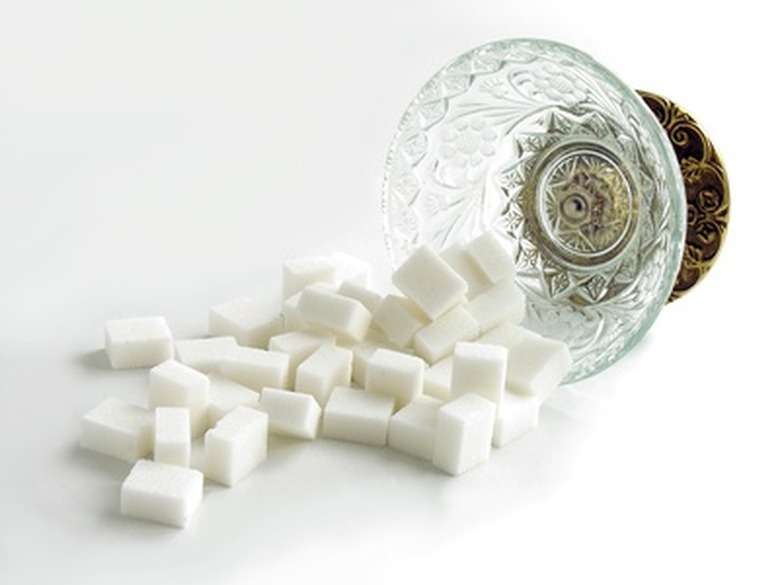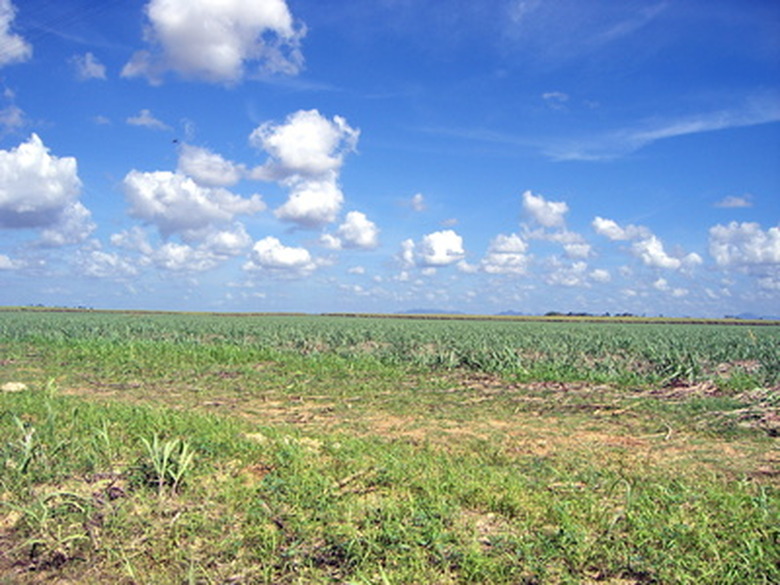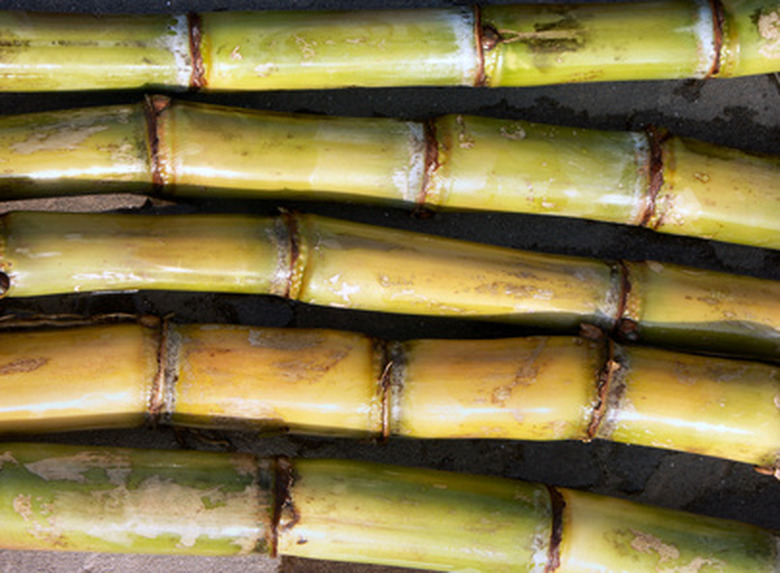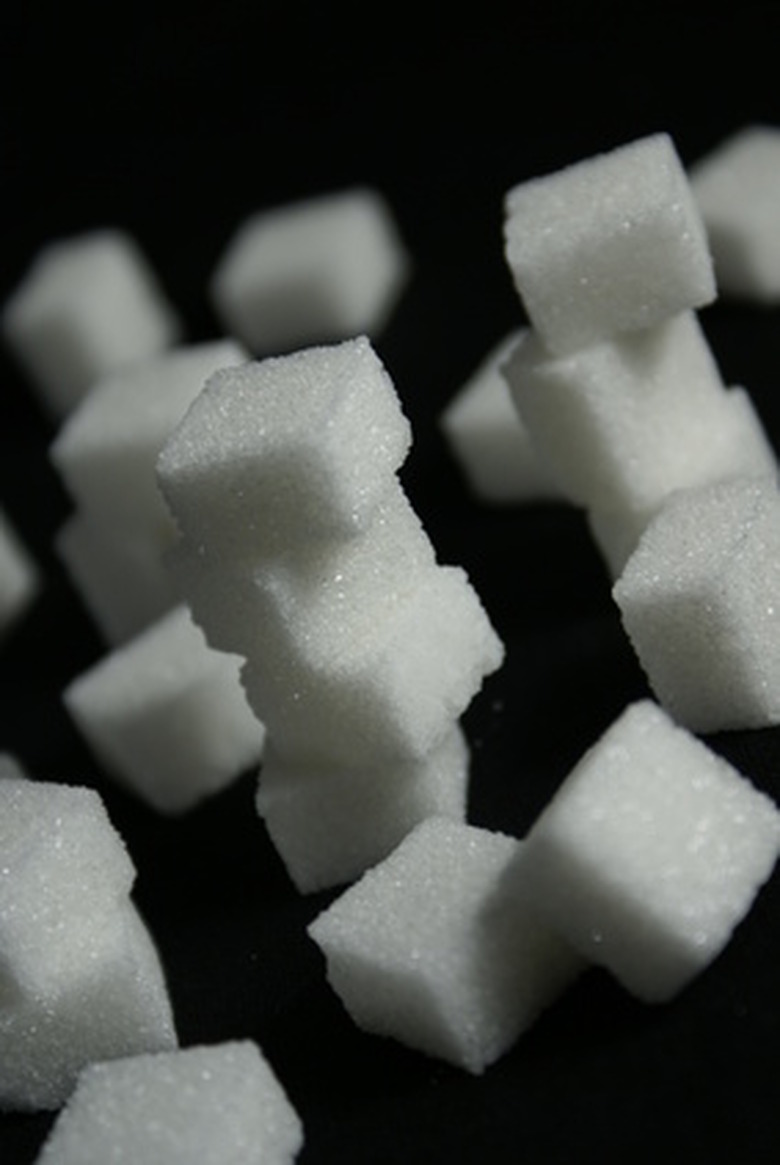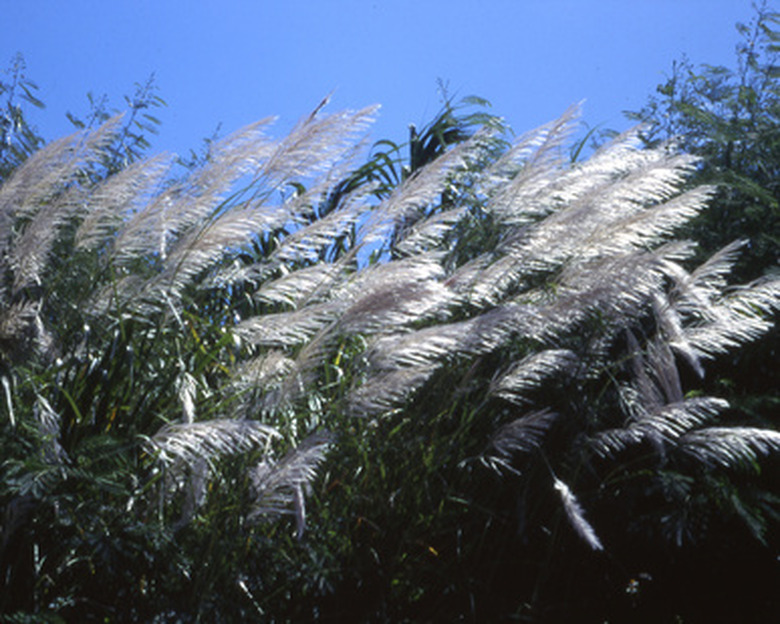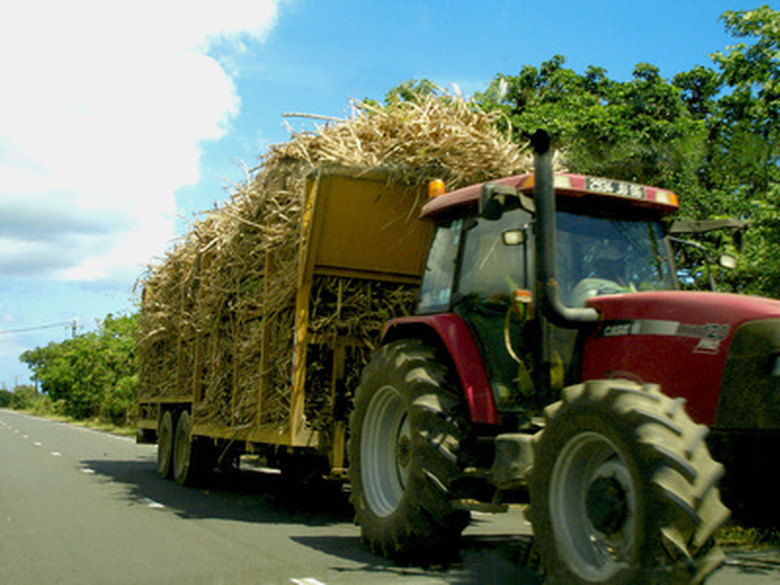The Life Cycle Of A Sugarcane Plant
The sugarcane plant (Saccharum officinarum) accounts for 75 percent of the world's sugar supply. Sugarcane is a large perennial grass that is grown for sugar production, chewing and syrup. The grass is native to Asia. It has been widely cultivated for more than 4,000 years, according to the University of Florida's website. It flourishes in tropical and sub-tropical regions that offer an ample water supply
Types
Four varieties of sugarcane plants are available and numerous cultivars. Crystal canes are used in the production of sugar across the world. Syrup canes contain less sucrose but offer syrup that is not quickly crystallized so it can easily be used in a pure syrup capacity. The chewing sugarcane varieties have chewy, fibrous canes that can be easily chewed and are often used in syrup production. Backyard sugarcane is commonly grown by the gardener for ornamental purposes, syrup and chewing.
- The sugarcane plant (Saccharum officinarum) accounts for 75 percent of the world's sugar supply.
- Backyard sugarcane is commonly grown by the gardener for ornamental purposes, syrup and chewing.
Planting
Sugarcane is planted from August through January. The field is normally fertilized using an 8-8-8 fertilizer before planting. Propagation is attained by using a seed cane. A seed cane is a thick stalk of sugarcane that contains three to six buds. The canes are planted in the soil 1 to 2 inches deep. The buds will readily sprout with little or no care. Each row of sugarcane should be spaced 5 feet apart. Seeds cannot be utilized for sugarcane reproduction because they rarely grow as a clone of the parent but end up genetically different.
- Sugarcane is planted from August through January.
- The canes are planted in the soil 1 to 2 inches deep.
Watering and Care
Sugarcane requires excessive amounts of water to flourish. The plants like to be moist, but do not like water-logged roots. In drought, the cane fields must be watered for the cane to attain the desired growth. If the soil is nutrient-poor, the sugarcane will require fertilizer applications that make up for the the deficiencies in the soil.
Seed Production
In the wintertime, the sugarcane plant produces tall plumes of flowers that quickly go to seed. Each flower will produce only one tiny seed. Sugarcane seeds do not germinate in the field, but are used in variety development practices to make new cultivars.
- Sugarcane requires excessive amounts of water to flourish.
- Sugarcane seeds do not germinate in the field, but are used in variety development practices to make new cultivars.
Harvesting and Replanting
Sugarcane is harvested once per year. The plants are maintained for three years and will achieve three harvests before the field is replanted. When plants are 3 years old, production begins to decline, the sugar level decreases and the plants become more prone to pests or disease. The old plants are simply plowed under and new seed canes are planted
